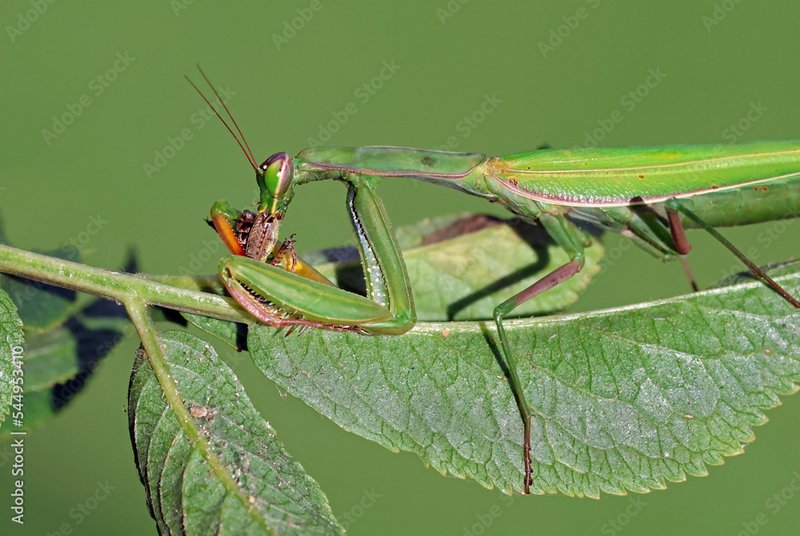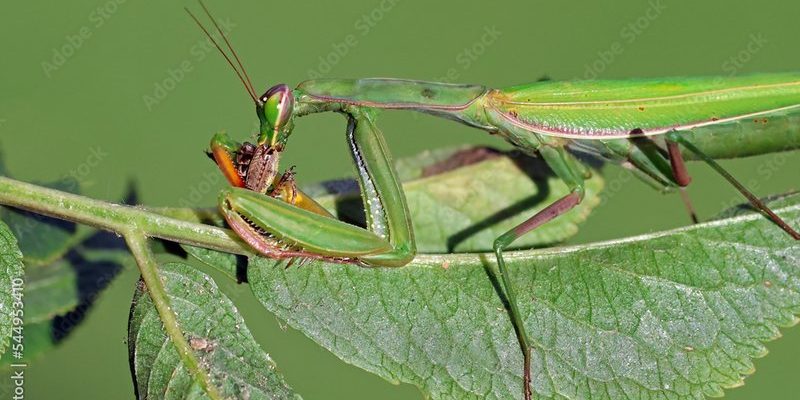
Imagine the praying mantis as a skilled ninja in a vast forest. It has remarkable agility and stealth, but lurking in the shadows are enemies just waiting for a chance to catch it off guard. In this article, we’ll take a closer look at the many dangers that threaten these agile insects. Just as every superhero has their villains, the praying mantis has its own set of predators and environmental challenges. Let’s dive into their world to understand what makes life a bit perilous for these incredible insects.
Common Predators of the Praying Mantis
When you picture a praying mantis, you might not immediately think of it as prey. After all, these insects have a reputation for being fierce hunters. However, they’re not invincible. A variety of predators consider the mantis a tasty snack. Birds, reptiles, and even other insects all have their eyes peeled for this green delicacy.
Birds are perhaps the biggest threat to praying mantises. These flying hunters often spot mantises while they’re perched quietly on leaves or branches. A swift swoop from a hungry bird can spell disaster for a mantis. Some common birds that feast on praying mantises include sparrows, robins, and even larger birds like hawks. Their keen eyesight makes it easy for them to spot the mantis even amidst the foliage.
Another fierce predator is the frog. These amphibians have excellent tongues that shoot out at lightning speed, capturing a mantis before it even realizes danger is near. Frogs tend to lurk near water bodies, so mantises exploring these areas may find themselves facing unexpected risks.
Insects that Feast on Mantises
It’s not just birds and frogs that pose a danger. Other insects, including wasps and spiders, also see the mantis as a potential meal. For instance, certain species of wasps will lay their eggs inside a mantis. When the wasp larvae hatch, they consume the mantis from the inside out, leading to a gruesome end. Spiders, particularly larger ones, can also ambush mantises, using their webs to trap these agile insects.
Environmental Threats to Mantises
Beyond predators, there are several environmental threats that make life hard for the praying mantis. Changes in weather patterns, habitat loss, and pesticide use all contribute to the decline of mantis populations.
Climate change is a significant factor. These insects thrive in specific temperature ranges, and shifting climates can disrupt their life cycles. For example, unseasonably cold weather can kill off young mantises before they get a chance to mature and reproduce. Similarly, extreme heat can lead to dehydration and a lack of food sources, creating a harsh environment for survival.
Another pressing issue is habitat destruction. As cities expand and green spaces shrink, mantises lose their natural homes. They rely heavily on plants for camouflage and hunting grounds. Without these environments, mantises find it difficult to thrive and reproduce, leading to declining populations.
Pesticides and Their Impact
The use of pesticides is another major concern. Many pesticides are not selective and can kill various insects, including beneficial ones like the praying mantis. Farmers often use these chemicals to protect crops, but unfortunately, this can decimate local insect populations. It’s like trying to fix a leaky faucet and flooding the whole kitchen instead. The intention is good, but the unintended consequences can be dire.
Human Impact on Praying Mantis Populations
While the praying mantis faces many natural threats, human actions can also jeopardize their survival. Whether through pollution or urbanization, we play a significant role in the fate of these insects.
Urbanization leads to the development of new buildings, roads, and infrastructure, which often means clearing out the natural habitats where mantises thrive. This not only reduces their living space but also limits their food sources. Think about it: if you suddenly moved to a neighborhood where there were no grocery stores, it would be tough to find something to eat!
Another factor is pollution. As we go about our daily lives, waste and chemicals can seep into the ground and waterways, affecting the ecosystems that mantises rely on. This can disrupt their breeding and feeding habits. For example, water pollution can lead to fewer insects, meaning there’s less for the mantis to eat.
Conservation Efforts
Fortunately, there are many conservation efforts aimed at protecting mantis populations. Local initiatives often focus on creating safe habitats and reducing pesticide use in agricultural practices. Educating the public about the benefits of mantises can also help. These insects play a crucial role in controlling pest populations, making them beneficial for garden health.
You can get involved, too! Simple actions like planting native flowers can help provide food and shelter for mantises. Creating a welcoming environment in your garden can not only benefit these insects but also attract other wildlife.
Signs of a Healthy Mantis Population
So, how can you tell if mantises are thriving in your area? There are a few signs you can look for. One of the most straightforward indicators is the presence of various life stages of mantises in your garden or local park. If you see adult mantises alongside younger nymphs, that’s a good sign of a healthy population.
Observation is key. If you notice mantises regularly hunting and being active, it indicates a balanced ecosystem. This balance is crucial for their survival, as it means there are enough resources available for them to thrive.
Another sign is a diverse insect population. Healthy mantises rely on a rich ecosystem filled with various insects for food. If you notice a variety of bugs buzzing around, it’s likely mantises are nearby too, enjoying the buffet.
Encouraging Mantises in Your Garden
If you’re interested in encouraging these fascinating insects in your garden, consider creating a favorable environment. Try planting a mix of native plants that attract insects, providing natural shelter. Avoid using harmful pesticides that could harm mantises and other beneficial insects. Instead, opt for organic pest control methods that won’t disrupt the local ecosystem.
In the grand scheme of things, the praying mantis plays an essential role in our ecosystems. They are both predators and prey, contributing to the delicate balance of nature. However, they face numerous challenges from predators, environmental shifts, and human actions. Understanding these threats is the first step toward helping them thrive.
By taking small actions, like creating habitats and reducing pesticide use, we can aid the survival of these astonishing insects. Next time you spot a praying mantis in your garden, take a moment to appreciate its elegance and resilience. After all, every little effort counts when it comes to conserving the wonders of our natural world.

